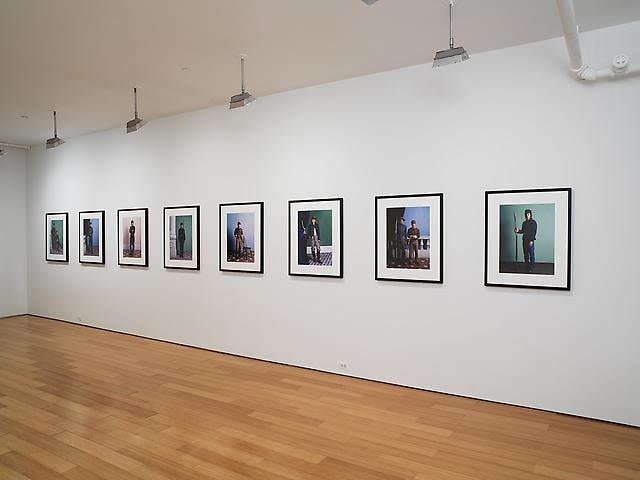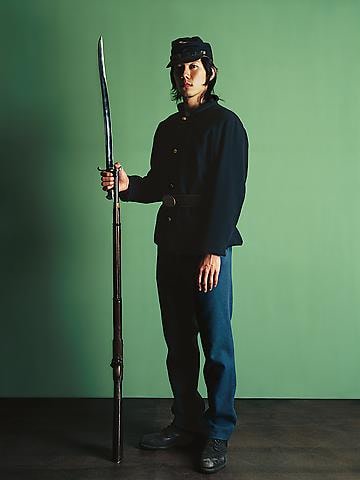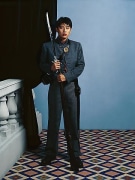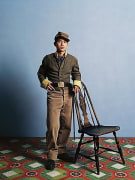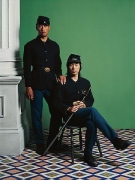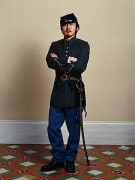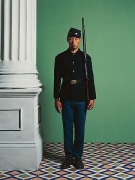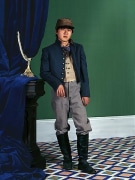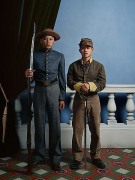Alexander Gray Associates
Continuing his ongoing research and interest in Hollywood cinema and its role in shaping cultural identity, Bruce Yonemoto presented a group of photographs that examine American wars, heroism, and ideas of national building.
In the series Untitled (NSEW), Bruce Yonemoto appropriates American Civil War-era photographic portraiture. Such photographs were precious memories of soldiers, treasured by family members on both sides of the Union, and play an important role in documenting the Civil War. Hollywood’s representations of the Civil War shaped Twentieth-Century relationships to race, evident in early cinematic features including D. W. Grifith’s landmark 1915 feature film, Birth of a Nation (The Clansman), and the Victor Flemming’s 1939 epic, Gone With the Wind. These two approaches to representation—early photography and early Twentieth-Century film—are the fodder for Yonemoto’s striking portraits.
The photographs depict Asian-American male models posing in full Civil War regalia, dressed in uniforms rented from Western Costume, Hollywood’s oldest rental collection that provided costumes for Birth of a Nation and Gone With the Wind. Yomemoto’s ongoing interest in the representation of Asian-Americans in U.S. History is furthered by the “casting” of Asians as Civil War soldiers and costuming them in uniforms and clothing representing both the North and the South, Yonemoto raises questions about war, servitude, and ethnic and national. In fact, Chinese immigrants fought on both sides of the Civil War, and as part of Yonemoto’s “re-enactment” with these photographs, a third “side” of the war is formed, based on race and ethnicity, rather than political divisions or ideals. Further questioning the visibility of Asians in American debates about race—typically codified as Black or White—the photographs question the role of the audience identification through photography. Also at play is fetishistic nature of current war re-enactment subcultures, and this phenomenon’s inherently sexual and racial role-playing.

